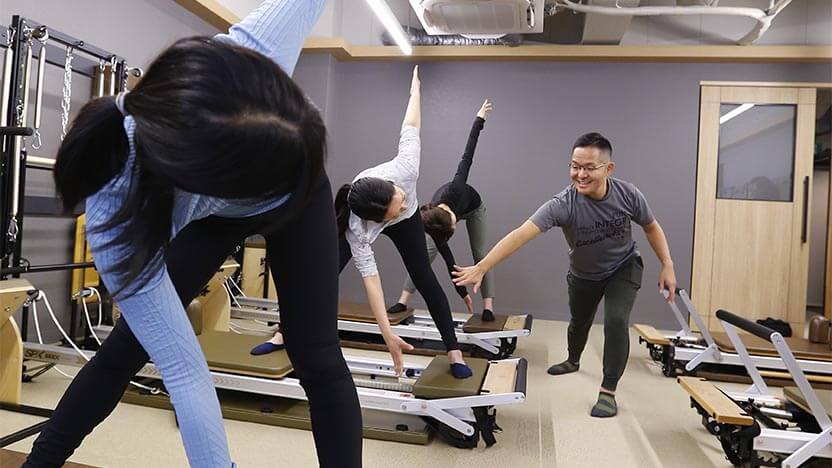
With the Tokyo Olympics kicking off this month, we reached out to one of our Merrithew® Lead Instructor Trainers in Japan to get his take on how Pilates and mindful movement exercises can help athletes boost their performance, reach their goals and prevent injury.
As a Lead IT, physical therapist, and president and founder of Bcube Pilates & Fitness, a Merrithew Licensed Training Center in Osaka, Japan, Wataru Kamiizumi is highly sought-after by athletes from all disciplines.
He has worked with elite athletes in golf, boxing, synchronized swimming, figure skating, rugby, triathlon, cycling, baseball and more.

Q: Why are elite athletes increasingly adding Pilates exercises and mindful movement to their training regimens?
Adopting a regular Pilates and mindful movement workout routine can have many benefits for athletes. This form of mind-body exercise counterbalances athletes’ high-intensity training regimens. It helps them work on other areas of the body or aspects of their training that cannot be fulfilled or may be neglected by other, higher-intensity athletic approaches.
For example, Pilates and mindful movement exercises can help athletes develop their neuromotor skills, spatial awareness and dynamic stability within the movement. All of these contribute to preventing potential injury in their game or performance.
From my perspective, athletes also generally appreciate the process of practicing mindful movement to become more fully aware of their own bodies. Also, as disciplined elite athletes, the practice of moving mindfully— with intention, awareness and focus— resonates with them. They’re used to this type of intense focus from competition.

Q: How do Pilates and mindful movement help performance, injury prevention and rehab?
Pilates and mindful movement provide muscle strengthening and endurance, and also teach people how power is transmitted throughout the body. This is particularly beneficial for athletes because it helps them enhance their motor control, which contributes to an athlete's performance development and injury prevention.
Pilates and mindful movement workouts allow athletes to embody the changes they’re making, and apply those discoveries on the field or in the game.
Q: What is the most important thing for fitness and Pilates instructors to know about working with elite athletes?
First, you need to identify and familiarize yourself with the physical demands of their sport. You need to understand the sport-specific movements that they must perform regularly. I often watch videos of them playing, or go see their game before we get together for a workout.
I always try to present a clear path or blueprint of how we’re going to get to their ultimate goal by setting ‘small goals’ in between. Those small goals, or milestones, should be achievable, realistic, and tangible.
Make sure to warn them that they may hit a plateau or experience a slight dip in performance during this journey as a result of changes in their body, but their performance should increase afterwards.

Questions to ask your athlete clients before designing a customized workout program
Where are they at physically right now?
- Identify the problem or area for improvement
- Identify any obstacles to helping them achieve their goal
- Determine how you can help
- Examine and understand their training routine and rest/recovery periods
What changes do they want to see from their current condition?
- Identify their goals and needs
- Know who else to onboard so you can communicate effectively with the rest of their training team
When exactly do they want to get there?
- Find out when they need to get to peak performance
- Determine if it is on-season or off-season
Explore our athletic conditioning and performance training workouts on Merrithew Connect™.
Get 14 days free >